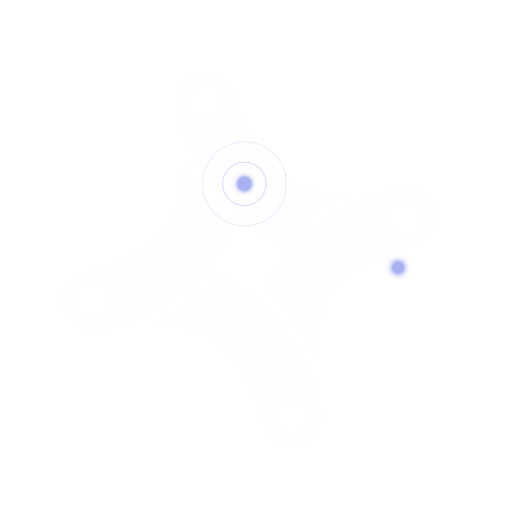You may not know exactly how big your attack surface actually is.
The larger your organization’s attack surface, the greater the danger that an attacker might find vulnerabilities to exploit — and your attack surface may be larger than you think it is.
Organizations’ attack surfaces have been growing fast in the last few years, thanks to the adoption of new platforms, smart devices, and cloud services. It’s easy to forget or overlook some parts of your external threat exposure, but this can lead to increased risk… and more doorways for threat actors who want to get into your networks and data.
Attack surface monitoring informs security teams of exposures and vulnerabilities that put cybersecurity at risk so they can make targeted improvements to stop attacks and prevent breaches. A key component of offensive cybersecurity, attack surface monitoring takes the advantage away from adversaries and gives it back to defenders, equipping them with the data, context, and insights they need to make the very best use of their time, energy, and resources.
It was once a feature exclusive to elite teams and large companies, but now attack surface monitoring is considered essential for everyone that takes cybersecurity seriously.
Overview of Attack Surface Monitoring
What is an attack surface?
Your attack surface refers to all the points in your system or network that can be targeted, exploited, or compromised in order to carry out a cyberattack. These points might include vulnerabilities in the software, misconfigurations in your network or system, or human error, like weak passwords or poor security hygiene. Your attack surface might include:
- Known assets: Registered domains and subdomains, SSL certificates, servers, devices, applications, and any endpoints used by your employees.
- Unknown assets: Shadow IT, old and forgotten apps or infrastructure, or orphaned user accounts that weren’t shut down when the user left the organization.
- Third-party assets: Any assets that have access to your networks and data, such as vendors, third parties, or partners.
- Malicious assets: Fake domains and subdomains that criminals sometimes create to impersonate your brand and trick unsuspecting customers.
What are common threats to your attack surface?
There are several common attack surface vulnerabilities that organizations should be aware of when it comes to securing systems and applications:
- Unpatched software: Threat actors know when patches are released, they know what vulnerabilities are being patched, and they’re really hoping your team doesn’t patch your software.
- Poor password hygiene: Passwords that are easy to guess or crack can provide an easy entry point for attackers.
- Misconfigured systems: Systems that are not properly configured can create security holes attackers can exploit.
- Social engineering attacks: Phishing and other social engineering attacks are designed to trick individuals into divulging sensitive information or clicking on malicious links. While many phishing campaigns are easy to spot, some attacks are sophisticated and difficult to identify.
- Malware: Malware such as viruses, Trojans, and ransomware can infect systems and steal or encrypt data.
- Insider threats: Insiders who have access to systems and data can intentionally or accidentally create vulnerabilities that can be exploited by attackers.
- Third-party risks: Vendors often come along with risk, especially if they have unrestricted access to your systems, devices, and data.
How does attack surface monitoring work?
As companies rely on ever-increasing amounts of interconnected technology and digital data, their attack surface grows, too, giving hackers more targets to attack and more techniques to employ. Attack surface monitoring searches proactively for anything—exposed credentials, leaked secrets, open ports, lookalike sites, and much more—so that security teams know precisely where their weaknesses exist and what risks attackers are likely to exploit, empowering defenders to address those issues early and aggressively.
How does attack surface monitoring serve cybersecurity?
Most cyber attacks aren’t that sophisticated because they don’t need to be; everything they need to access systems and outwit defenses can be found online. Systematically finding and eliminating these exposures, starting with the riskiest, takes away the biggest advantage the attackers have and the one resource they rely on more than any other: sensitive information. Without that advantage, many attacks fail upon arrival, causing no damage, requiring no response, and setting off no alarm bells. With attack surface monitoring, weaknesses become strengths until, eventually, there’s nothing left to give attackers an edge.
What does it take to excel at attack surface monitoring?
Attack surface monitoring requires the ability to monitor for all information that may be exposed wherever it may be located, making it a time- and labor-intensive undertaking. Adding to the complexity, dark web monitoring requires access to highly guarded communities of insiders, and those relationships take time and finesse to cultivate. All companies want and need to excel at attack surface monitoring, yet few realistically have the resources to keep looking 24/7/365 in all directions at once, which is why many seek to automate or outsource the discovery process to attack surface management vendors.
How is attack surface monitoring (ASM) different from external attack surface management (EASM)?
An organization’s attack surface includes every surface, both internal and external, that an organization has. The external attack surface, for example, includes all Internet-facing digital vulnerabilities that can compromise your data and networks. External attack surface management (EASM) is the process of scanning for, finding, analyzing and remediating all of these potential risks. Internal attack surface monitoring (IASM) focuses on internal risks like shadow IT, employee behavior, and credential-related risks.
Why is Attack Surface Monitoring Especially Relevant Now?
Why are cybersecurity priorities shifting towards attack surface monitoring?
Due to the rising costs of cyber attacks, the increasing instances of data breaches, and the challenges of stopping ransomware, cybersecurity priorities have been shifting from detection and response to prevention and resilience. Attack surface monitoring serves this priority by helping companies address exposures preemptively rather than waiting for an incident to reveal their location and severity. Customers, insurers, and regulators are all holding companies to higher cybersecurity standards, foremost the expectation that they will avoid attacks rather than withstand them.
How can your organization protect its attack surface?
- Know your surface area: You can’t manage what you can’t measure. Inventory your digital and physical assets, including all systems, devices, and applications, as well as any shadow IT and technology used by remote workers. You can do this manually, or use scanning technology to help you get a better picture of your external threats.
- Map your network: A complex IT infrastructure can be risky for your organization. By mapping your network, you can identify all the connections between your devices and applications, which will help identify potential attack vectors that an attacker can use to move laterally across your network.
- Prioritize your vulnerabilities: It may not be possible to remediate all your vulnerabilities at once, but by knowing your attack surface you’ll be able to prioritize the risks that need mitigation immediately.
Will attack surface monitoring replace other cybersecurity solutions?
It’s better to think of attack surface monitoring as a complement for other solutions rather than a replacement. Since there’s no way to eliminate all vulnerabilities or stop all incoming attacks, security teams must still prioritize threat detection and incident response—but they will face fewer alerts and have more resources for each incident with attack surface monitoring helping to prevent attacks and fortify the perimeter. What it can replace is the large amounts of manual labor that must continually go towards managing threats and limiting exposures.
How does attack surface monitoring relate to threat exposure management?
Threat exposure management (TEM) would not be complete without attack surface monitoring. Together with cyber threat intelligence and digital risk protection, attack surface monitoring is one of the three pillars of threat exposure management. Knowing that credentials, secrets, and so much more sensitive information is somewhere on the internet, security teams can neither fully understand nor effectively manage their threat exposure without relying extensively on attack surface monitoring. Threat exposure management would be incomplete and, as a result, ineffective without keeping a close eye on the attack surface.
What is the future of attack surface monitoring?
All signs suggest that attack surface monitoring will become an even bigger priority in cybersecurity as companies face mounting pressure to avoid attacks at all costs. Remaining competitive will depend on minimizing losses while building a reputation for security and stability, making it imperative to address threats at the very earliest indication.
All signs also suggest that attack surface monitoring will become increasingly onerous and unreliable as the attack surface becomes larger and more dangerous. Most if not all companies will struggle to see their entire attack surface, monitor it continually, rank exposures by risk, and glean enough context to make remediation efficient and lasting. As a result, many will seek automated tooling to help deal with the speed, scale, and synergy of tomorrow’s attack surface.
How Flare Supports Attack Surface Monitoring
What does Flare offer for attack surface monitoring?
It can be difficult for your security team to manually monitor every possible attack vector — especially since your attack surface is always growing and changing. Flare gives users unparalleled visibility into their external attack surface: everywhere that credentials, secrets, and data are exposed on the public-facing internet.
The external part of the attack surface is arguably harder to monitor since it’s as big as the entire internet, dark web included. Flare automates external attack surface monitoring, searching far and wide for exposed information and condensing the results into a clear and actionable format.
Which attack surface monitoring use cases can Flare satisfy?
By making it easy to discover, organize, contextualize, and remediate sensitive data exposed on the internet, Flare satisfies a number of pressing use cases. Companies can monitor the dark web, where hackers meet and attacks originate, to get advanced warning about incoming threats. They can discover what data has leaked from the organization to learn where data loss prevention needs to improve. Or they can prevent account takeover by finding and then revoking exposed credentials. In all cases, Flare automates and expedites attack surface analysis to take the emphasis off discovery and put it on hardening instead.
What are the key benefits of Flare’s attack surface monitoring solution?
- Preventative Cybersecurity: Existing and emerging attacks are less likely to succeed when security teams monitor and manage their external attack surface.
- Efficient Operations: Automating the process of finding, contextualizing, and risk ranking exposed information makes security operations more efficient.
- Dynamic Defenses: Monitoring the dark web and staying on-guard against data leakage helps to keep cyber defenses as dynamic and relevant as the attacks they face.
- Actionable Intelligence: Security teams are faced with a lot of noise from threat management tools, so Flare cuts through the noise by constantly scanning your attack surface, and providing high-fidelity, actionable intelligence specific to your organization, offering context, sources, and translation if needed.
Attack Surface Monitoring and Flare
The Flare Threat Exposure Management (TEM) solution empowers organizations to proactively detect, prioritize, and mitigate the types of exposures commonly exploited by threat actors. Our platform automatically scans the clear & dark web and prominent threat actor communities 24/7 to discover unknown events, prioritize risks, and deliver actionable intelligence you can use instantly to improve security. Attack surface monitoring has never been more accessible, informative, or actionable, producing results almost instantly that directly lower cyber risk.
Flare integrates into your security program in 30 minutes and often replaces several SaaS and open source tools. Learn more by signing up for our free trial.


